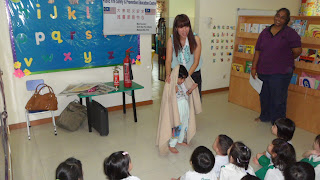As part of the lesson on healthy eating, the K2 students learned healthy ways of cooking food. One of these ways is to bake! So, the teachers and kids rallied together and made some baked macaroni for lunch last Friday.
First, the main duties were divided among the students:
IJ was on vege duty! She had to rip out the mushroom stalks and tear the mushroom into chunks.
Yong Jie was put on cheese duty where she grated up some mozzarella to top the baked macaroni!
Yu Ming was our sauce master! He was asked to stir up the cream of mushroom to perfection!
Jia En filled our cream sauce with chicken chunks so we could have some protein in our meal!
Once the sauce had all the ingredients in, Shaun and Alyssa were put together to scoop up the sauce and mix it with the macaroni.
What works? Team work!
We then scooped them into trays and topped them off with some mozzarella and cheddar!
Just before it gets popped in the oven.
Fresh out of the oven!
Yummy, yummy, baked macaroni!
Soon after their lessons, the children were served with their baked macaroni!
The boys can't wait to get a taste of their handiwork
Some for me and some for you :)
The children truly enjoyed their meal and many of them had second and third servings!
A tip for mummies:
Getting children involved in the preparation of their meals helps them understand why they should eat healthy and is a good way of getting them to eat more!
We're hoping for more cooking sessions in the future! Parents, do share with us if you know simple recipes for kids that you and your children love making together!
Till next time :)






























































